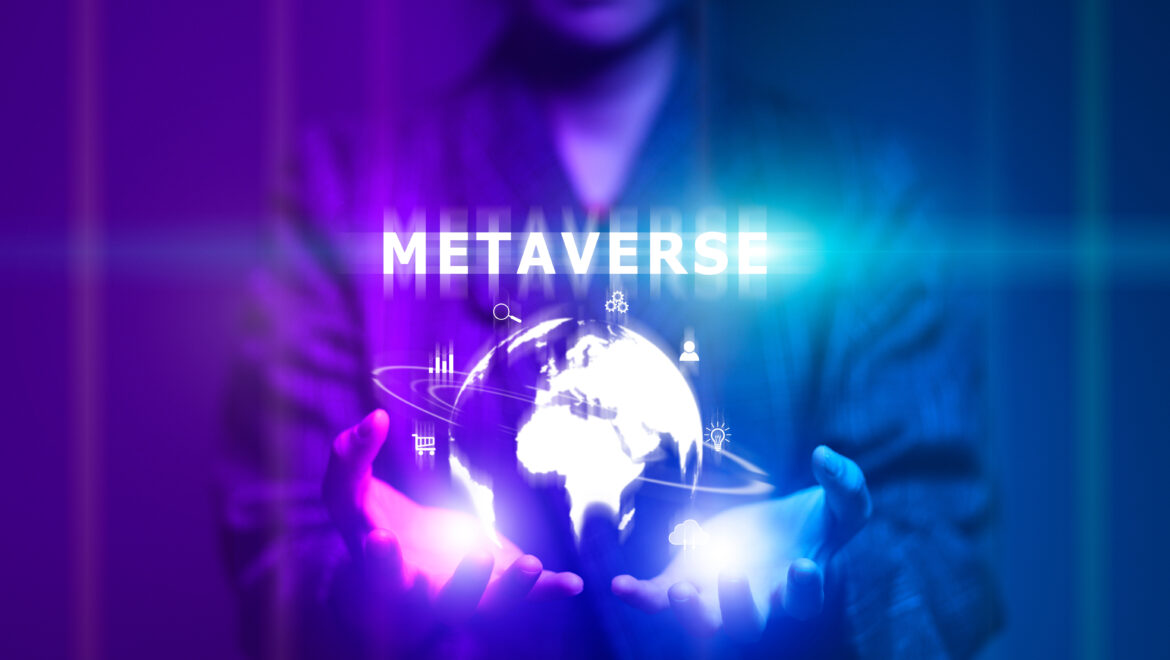
The industrial metaverse: challenges and opportunities
Is it the next industrial revolution or just hot air? Even if the metaverse and its actual potential are the subject of controversy, it is already a market worth billions. New application scenarios are emerging almost daily in a wide variety of areas of life and industries. What specific challenges does the metaverse face? And what opportunities are there, especially in the industrial environment?
The metaverse combines our familiar physical reality with a virtual, augmented digital environment to create a new immersive experience. What was considered pure science fiction a few years ago is now quantified as a billion-dollar market by many leading market research institutes. But metaverse technology is polarizing. While some list it as a top technology trend for 2023, others dismiss it as exaggerated hype. The main reason for the controversial opinion is that the technology is not yet mature and still faces growing pains and challenges.
What are the main obstacles?
- Lack of standards: there is not one metaverse. Technology giants, such as Meta and Microsoft, are still fighting for dominance of a global standard. Thus, there is still a lack of interoperability and a cohesive metaverse world. As a result, as long as appropriate standards are lacking, many companies are holding back on investments.
- Technological obstacles: on the one hand, the computing power in many metaverse worlds is not yet sufficient to handle millions of users worldwide and the increasing graphical details; on the other hand, user experiences still differ greatly depending on which hardware is used.
- Low adoption in individual age groups: so far, many age groups have been reluctant to join the metaverse. This is a challenge for brands looking to invest in the metaverse. They need to reinvent their product marketing strategies without damaging overall brand perception.
- Lack of inclusion: access to metaverse worlds requires appropriate digital hardware, which is currently relatively expensive to purchase. In addition, most VR/AR glasses are not suitable for people with visual impairments or epilepsy.
- Social challenges: among the biggest issues facing the metaverse is the impact of this technology on people’s ability to interact face-to-face in physical reality. This is especially true for the younger generations who are growing up with this technology and were already limited in their ability to move around the world due to a long-standing pandemic.
Opportunities and use cases in the industrial environment
The challenges and growing pains of the metaverse mentioned above are offset by far-reaching potentials and a multitude of existing use cases. Individual areas of life and industries are more advanced than others. In general, accelerated by the Covid pandemic, more and more companies and brands have focused on digitizing their customer experience in recent years. This has undoubtedly spurred the metaverse.
Virtual reality (VR), augmented reality (AR), mixed reality (MR), and other multisensory technologies are enabling deeper immersion into the digital world and our online activities. After metaverse concepts initially made inroads primarily in the gaming and entertainment industries, there are now also diverse application scenarios in the industrial environment.
Predictive maintenance: digital twin makes it possible
The focus here is particularly on the digital twin and blockchain technologies. Among other things, the goal is to optimize and improve productivity, quality and safety through multisensory support. The basic idea here is that real devices, products, machines or plants are equipped with a multitude of sensors that record all activities of the object itself, but also additional environmental factors such as weather conditions. This data is then incorporated into an exact copy, a virtual image: the digital twin.
In the metaverse, digital twins come to life just like their physical counterparts. With the help of VR and AR technologies, they not only become visualizable, walkable and experienceable, but are also put into relationship with other digital twins in the environment of the metaverse.
By applying the data collected in physical reality and extrapolating it into the future, manufacturing companies can, for example, predict when a machine will need maintenance, which specific parts are relevant or need to be replaced, and which skilled workers they will need to do so. This particular technique is already being used by Boeing on its aircraft engines. In this way, a specific maintenance technician is deployed at the right gate at the right airport around the world at the right time, thanks to the predictive maintenance process.
Optimizing the production line with IoT sensor data
Siemens partnered with NVidia to combine their Omniverse and Tecnomatix technologies, which also helped drive the digital twin in the industrial metaverse. Their partnership enabled the creation of complete digital twins of production lines in factories. Driven by IoT sensor data from the physical production line, the digital twin enables optimizations in the production line itself, in addition to predictive maintenance.
Specifically, this can mean that identified underperforming steps in the chain can be changed by first simulating adjustments in the digital twin. In this way, companies avoid having to physically change the production line itself. Changes to the manufacturing process itself, such as new parts, can first be tested in the digital twin to evaluate the impact. These techniques have been studied and have shown an astounding increase of over 90 percent in original equipment effectiveness, reliability and uptime.
Bottom line: finding your way out of experimentation mode
Should the metaverse still be considered a future trend? The case for this is that many brands have experimented with the new capabilities in recent years, and the rate at which new use cases are announced and released remains high. However, given the challenges mentioned above, the question is to what extent the technology itself, and also the companies and brands associated with it, will succeed in one day leaving this experimental mode and moving to approaches and standards that will anchor this technology in the B2B and B2C world in the long run.